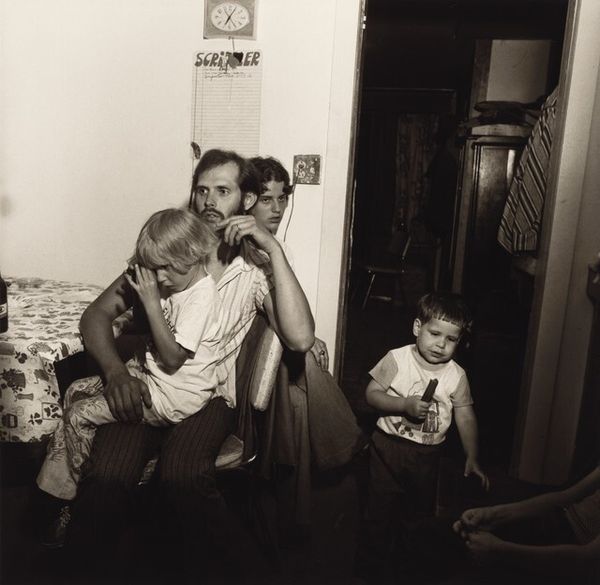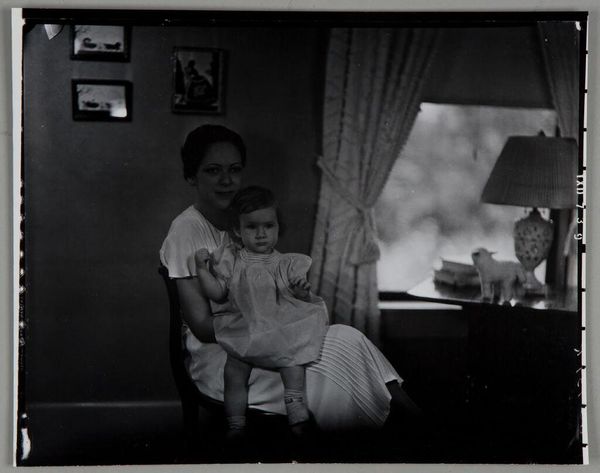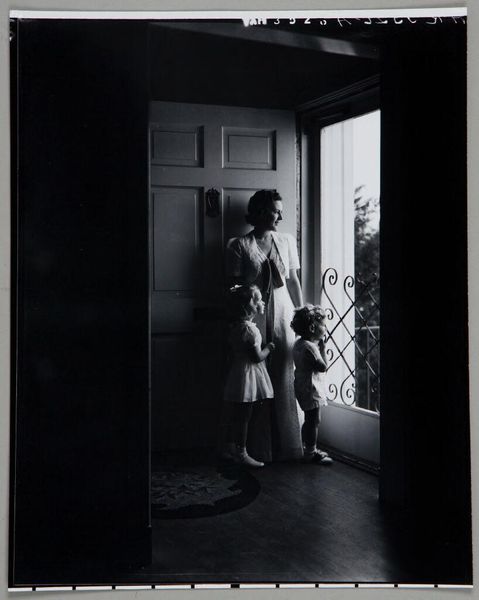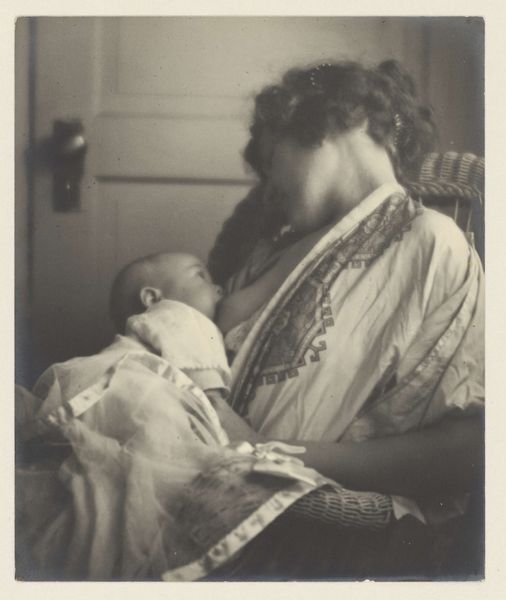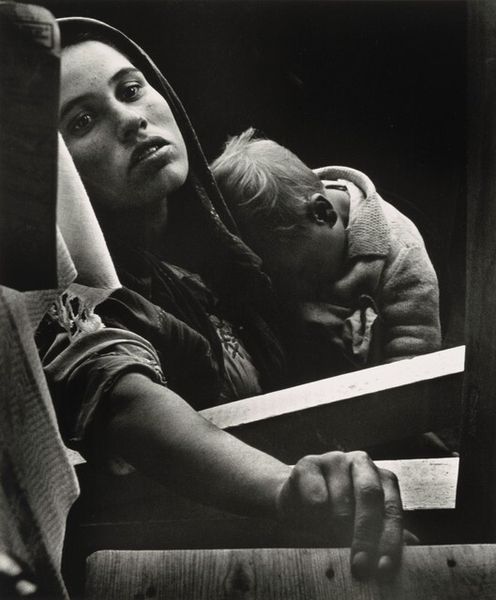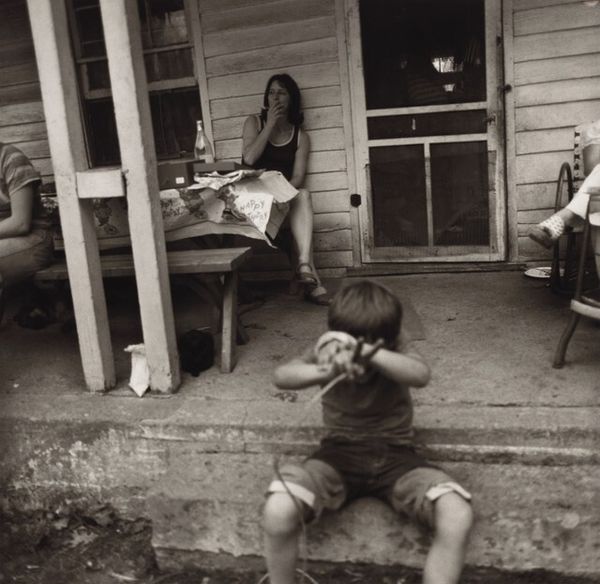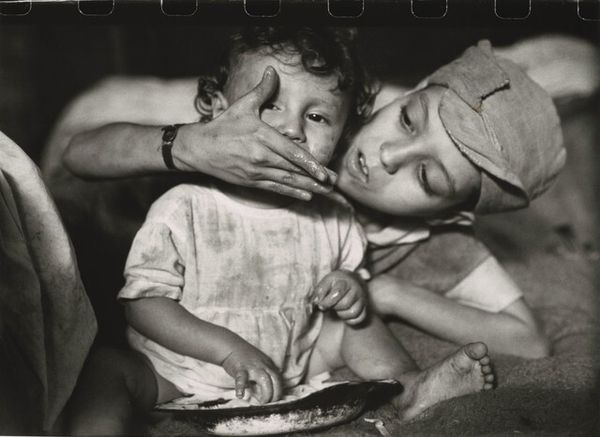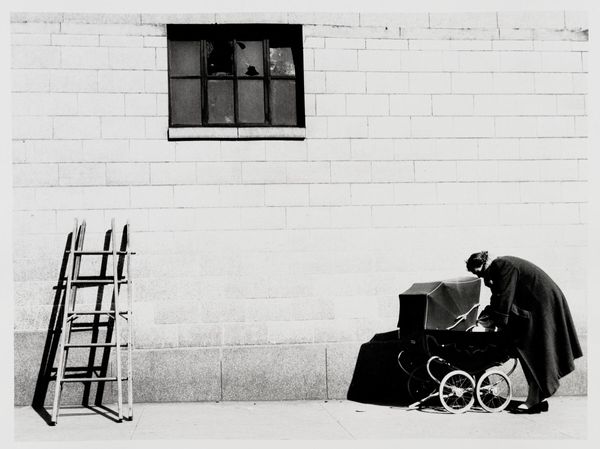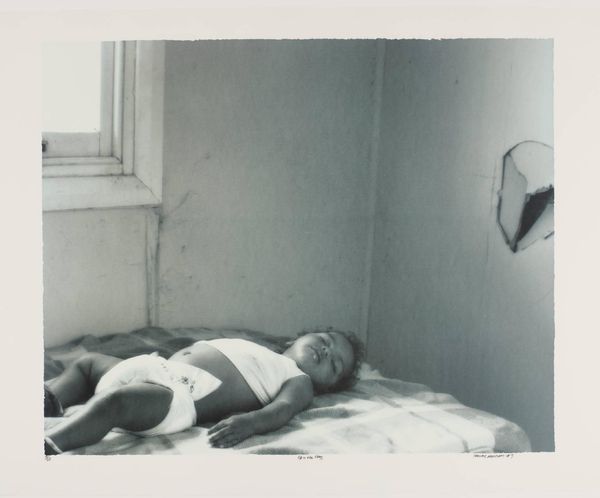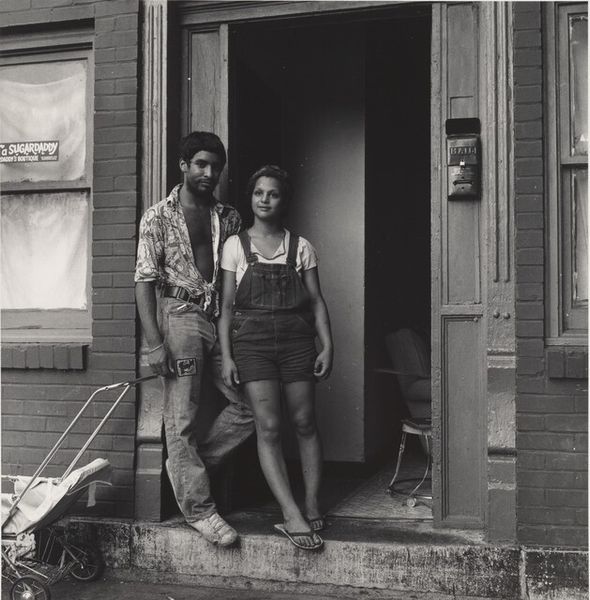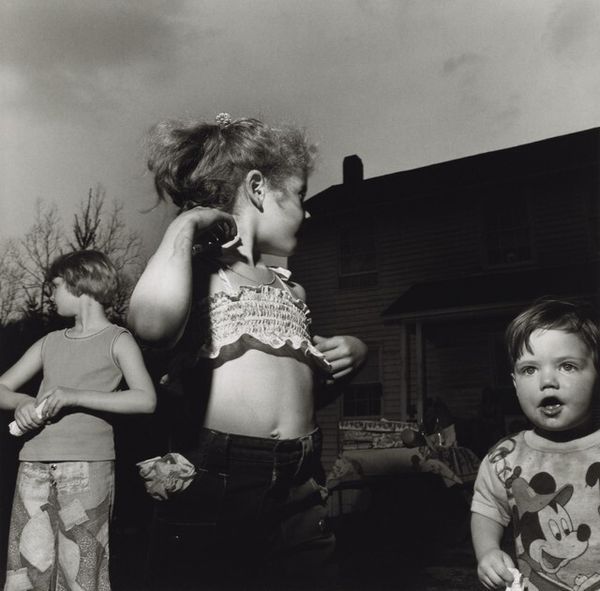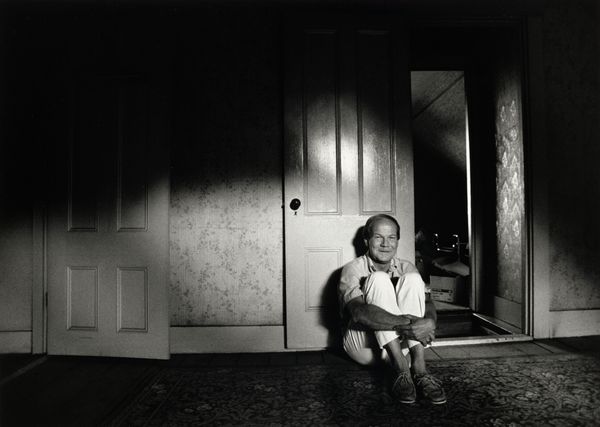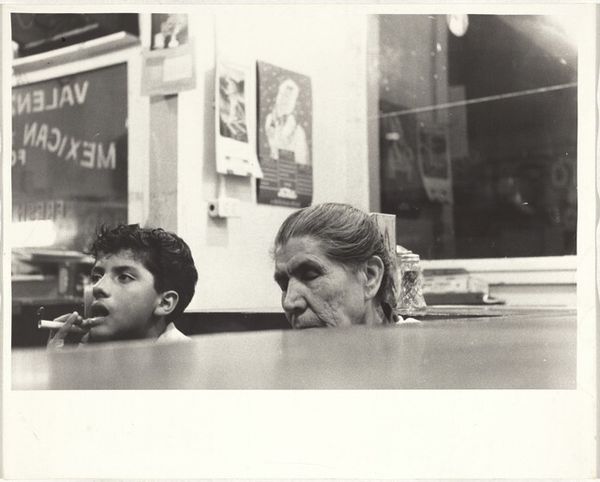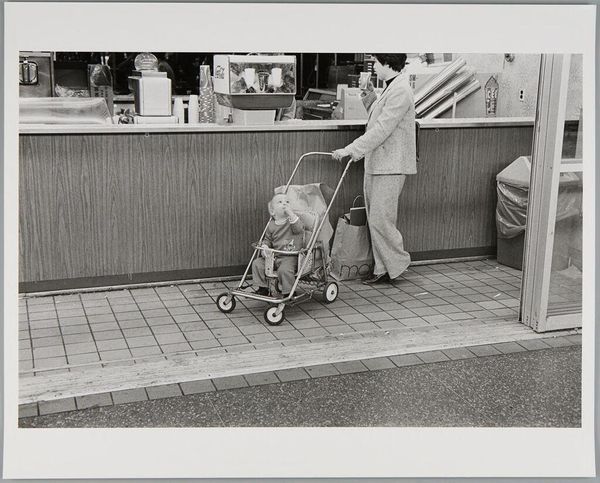
photography, gelatin-silver-print
#
portrait
#
contemporary
#
black and white photography
#
landscape
#
social-realism
#
street-photography
#
photography
#
black and white
#
gelatin-silver-print
#
monochrome photography
#
ashcan-school
#
monochrome
#
realism
#
monochrome
Dimensions: image: 20.6 x 20.5 cm (8 1/8 x 8 1/16 in.) sheet: 23 x 28 cm (9 1/16 x 11 in.)
Copyright: National Gallery of Art: CC0 1.0
Curator: Milton Rogovin's "Untitled" photograph from his Appalachia series, captured between 1962 and 1971, presents a poignant scene of a mother and child in stark, black and white detail. It’s a gelatin silver print. Editor: The first thing that strikes me is the composition—this dense layering. A brick wall juxtaposed with reflections in a storefront window. It creates this feeling of enclosure, doesn't it? Almost claustrophobic. Curator: Absolutely. And that compression is deliberate. Rogovin aimed to portray the lived experiences of working-class families, focusing on the raw realities of their existence. He meticulously chose gelatin silver for its tonal range. Its contrasts enhance the grittiness, echoing the subjects' environment. Editor: Gelatin silver processes allow for incredible sharpness, as you pointed out, highlighting detail but it is labor-intensive! He must have understood that the physical effort in creating each print mirrored the hard work of his subjects, the very people he photographed. Is there any documented reasoning that influenced the material selection, though? Curator: I’ve often wondered that myself, particularly if he perceived an almost "honest" link between his practice, the social issues and even its inherent limitations of time, light or even labor. I tend to see it in the unwavering gaze of the mother. It suggests a quiet strength, even in the face of struggle. Editor: That direct gaze also speaks volumes. These are not passive subjects but active participants. And placing them against the window of commerce... it makes me question consumption, labor, even exploitation inherent in capitalism, as relevant then as it is now. The brick of that industrial backdrop and building itself represent permanence and decay! What does it all *mean*? Curator: Perhaps it invites us to reflect on our own positions, our relationship to labor, motherhood, and the forgotten corners of our society. Ultimately it's a very compelling moment suspended in time, isn't it? Editor: Yes. I’m left contemplating how materials—brick, silver, light—intersect with the labor of the photographer and the realities of the photographed to offer a powerful social statement, a silent scream in black and white.
Comments
No comments
Be the first to comment and join the conversation on the ultimate creative platform.
